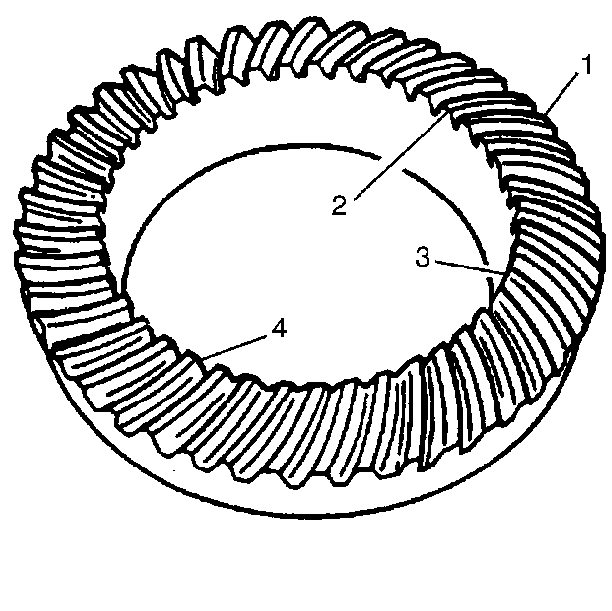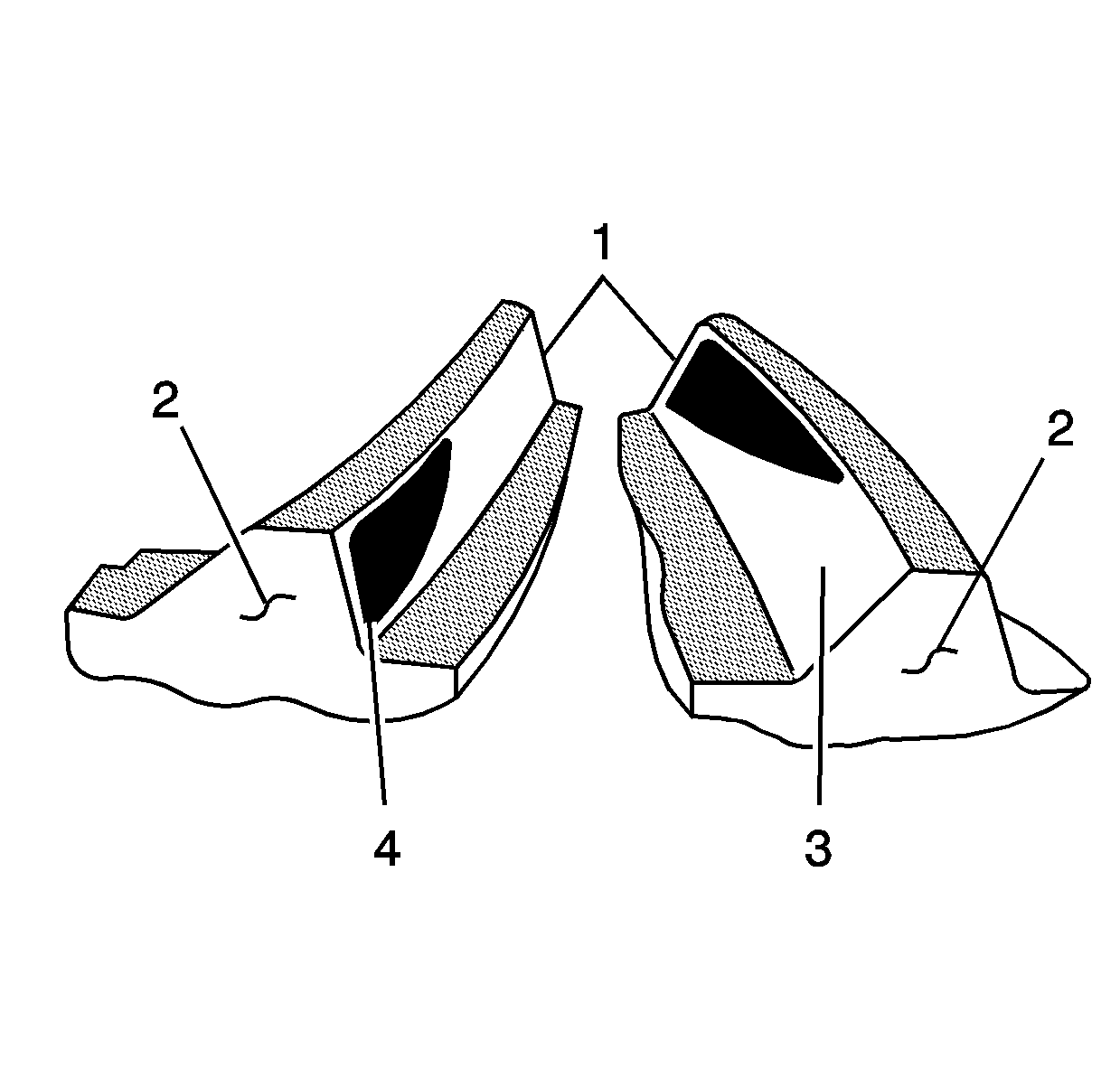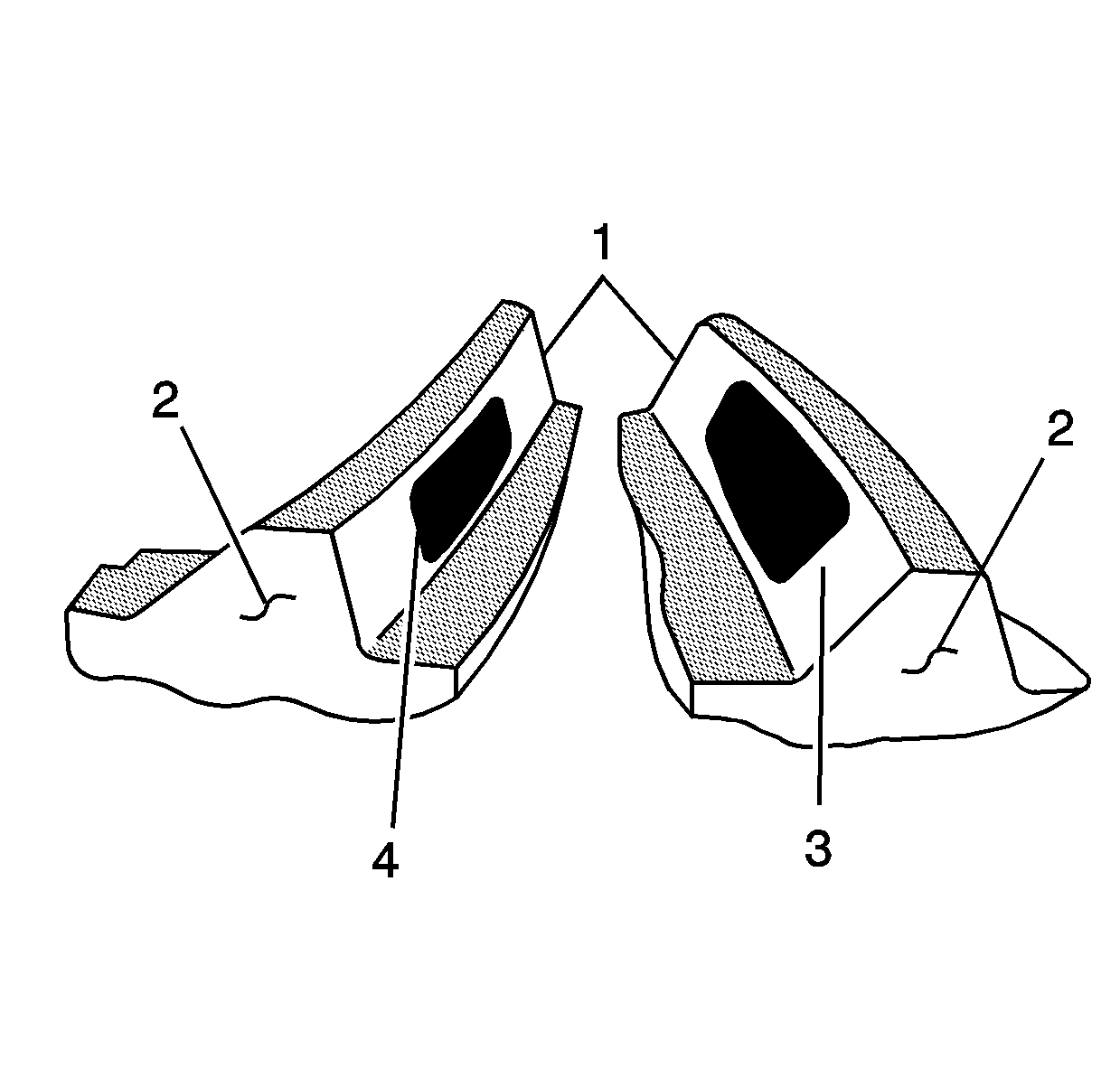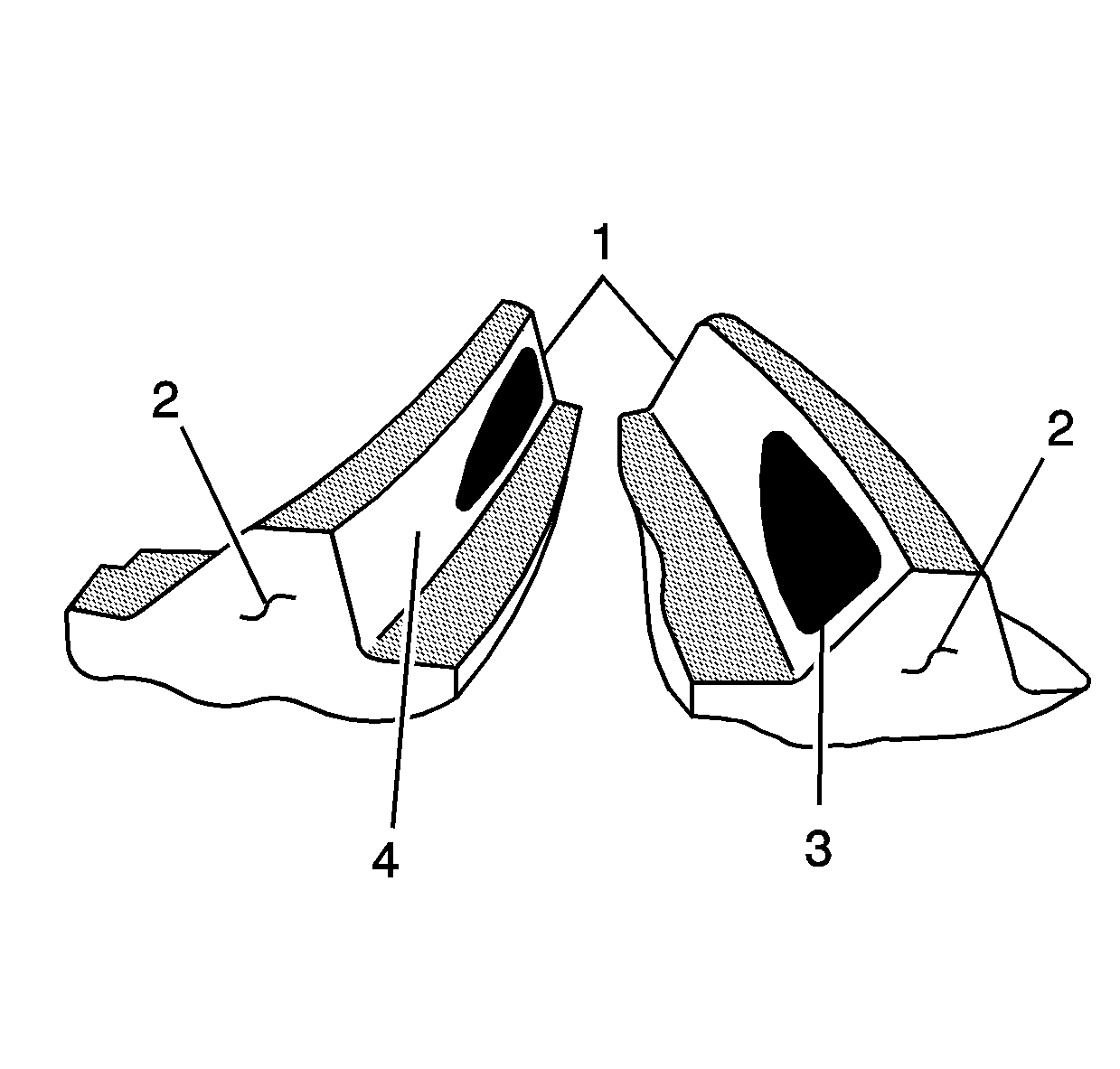Before final assembly of the differential, perform a gear tooth pattern check.
This contact pattern check is not a substitute for adjusting the pinion depth and backlash. Use this method in order to verify the correct running position of the ring gear and drive pinion. Gear sets which are not positioned properly may be noisy, have a short life, or both. A pattern check ensures the best contact between the ring gear and the drive pinion for low noise and long life.
Gear Tooth Nomenclature

The side of the ring gear tooth which curves outward, or is convex, is the drive side (4). The concave side is the coast side (3). The end of the tooth nearest the center of the ring gear is the toe end (2). The end of the tooth farthest away from the center is the heel end (1).
Testing Procedure
- Wipe the oil out of the axle housing. Carefully clean each tooth of the ring gear.
- Use a medium stiff brush in order to sparingly apply gear marking compound to all of the ring gear teeth.
- Use the parking brake in order to apply a load until a torque of 61 N·m (45 lb ft) is required in order to turn the pinion.
- Turn the companion flange with a wrench so that the ring gear rotates one full revolution.
- Reverse the rotation so that the ring gear rotates one revolution in the opposite direction.
- Observe the pattern on the ring gear teeth. Compare the pattern with the following illustrations. Use the legend below:
Important: A test made without loading the gears does not give a satisfactory pattern.
Important: Avoid excessive turning of the ring gear.
| 6.1. | (1) Toe |
| 6.2. | (2) Heel |
| 6.3. | (3) Coast side (Concave) |
| 6.4. | (4) Drive side (Convex) |
Condition
| • |

|
| • |
Correction
Increase the thickness of the pinion shim.
Service Hints
How to check the pattern:
- Brush gear marking compound on the ring gear teeth.
- Rotate the pinion clockwise six times.
- Rotate the pinion counterclockwise six times.
- Observe the tooth contact pattern. Make any necessary corrections.
Condition
| • |

|
| • |
Correction
Correction may not be necessary.
Service Hints
Loose bearings on the pinion or in the differential case may cause patterns that vary. Check the following preload settings:
| • | Total assembly |
| • | Differential case |
| • | Pinion |
If these settings are correct, look for damage or incorrectly assembled parts.
Condition
| • |

|
| • |
Correction
Decrease the thickness of the pinion shim.
Service Hints
The shims which adjust the pinion depth are located:
| • | Between the inner pinion bearing cone and the hear of the pinion gear |
| • | Between the inner pinion bearing cup and the rear axle housing |
Adjustments Affecting Tooth Contact
There are two adjustments that affect the tooth contact pattern: backlash and drive pinion depth. The effects of bearing preloads are not readily apparent on hand loaded tooth contact pattern tests. However, bearing preloads should be within specifications before proceeding with backlash and drive pinion adjustments.
Adjust the position of the drive pinion by increasing or decreasing the distance between the pinion head and the centerline of the ring gear. Decreasing the distance moves the pinion closer to the centerline of the ring gear. Increasing the distance moves the pinion farther away from the centerline of the ring gear.
Adjust the backlash by means of the side bearing adjusting shims which move the case and ring gear assembly closer to, or farther from, the drive pinion. Also use the adjusting shims to set the side bearing preload.
If the thickness of the right shim is increased, along with an equal decrease in the thickness of the left shim, backlash will increase.
If the thickness of the left shim is increased, along with an equal decrease in the thickness of the right shim, the backlash will decrease.
